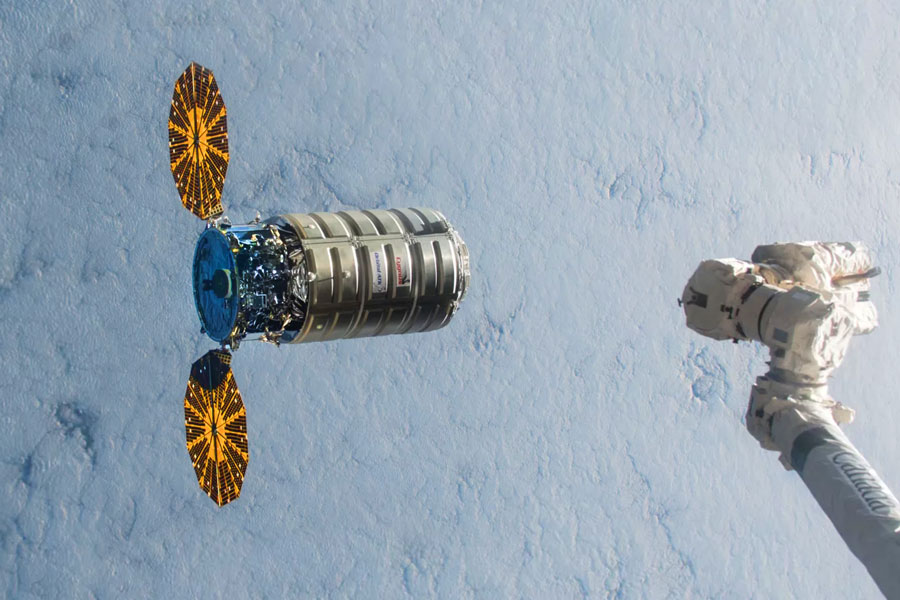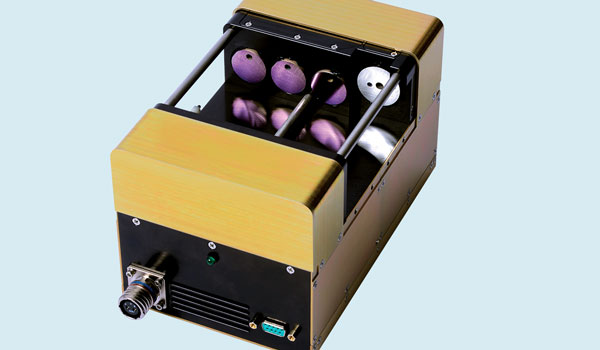Above:
CYGNUS Orbital Supply Vehicle. It has now docked on the station's Earth-facing port of the Unity module via the CanadArm 2 robotic arm.
Spacecraft Fire
Fire Safety in Space
Ryan Briggs - Mathieu Fradet
Fires can happen anywhere—even in space. So, for the astronauts who live and work there, it is critical to understand how fire spreads in a microgravity environment and how to manage it safely. NASA has conducted studies as part of the space shuttle and International Space Station (ISS) programs, but these have been limited in size and scope due to the risks involved for astronauts. Now, new experiments are helping researchers better understand spacecraft fires on a larger scale.
The Spacecraft Fire Experiment, known as Saffire, is a series of tests on unmanned supply vehicles returning from the ISS. The Microdevices Laboratory (MDL) has developed a laser-based instrument to measure the gases that the test fires produce. Fire experiments in realistic environments help engineers understand risks to human health and formulate protective measures. Fire hazards are particularly dangerous in the confines of human- occupied spacecraft, yet there are limited opportunities to test fire protection systems in orbit. Led by NASA’s Glenn Research Center, Saffire consists of a series of full-scale combustion tests performed aboard automated transfer vehicles during the return trip from the International Space Station. Saffire enables the study of flame growth, flammability limits, and other important characteristics within the unique low-gravity environment of space, without risking the safety of astronauts.
Engineers from MDL have developed the Combustion Product Monitor (CPM) instrument to measure specific fire products during a future Saffire flight. CPM uses compact semiconductor lasers to probe the abundance of carbon monoxide, carbon dioxide, and oxygen, as well as trace amounts of hydrogen fluoride, hydrogen chloride, and hydrogen cyanide, as these gases are produced (or consumed) during a combustion event. The JPL CPM instrument is expected to launch aboard an Orbital Sciences Cygnus resupply vehicle in 2020. Fire experiments will be conducted after the spacecraft departs from the International Space Station and prior to reentering Earth’s atmosphere.
In addition to supporting the near-term objectives of Saffire, the CPM instrument is a valuable testbed for laser spectroscopy sensors designed to support human spaceflight operations. Laser-based gas sensors can produce accurate concentration measurements over a broad range of pressures and temperatures and are capable of thousands of hours of maintenance-free operation. Such a robust sensor platform will be essential as humans push beyond low Earth orbit to explore deep space.
The Saffire program is led by Dr. Gary Ruff, at the NASA Glenn Research Center in Cleveland, Ohio.



